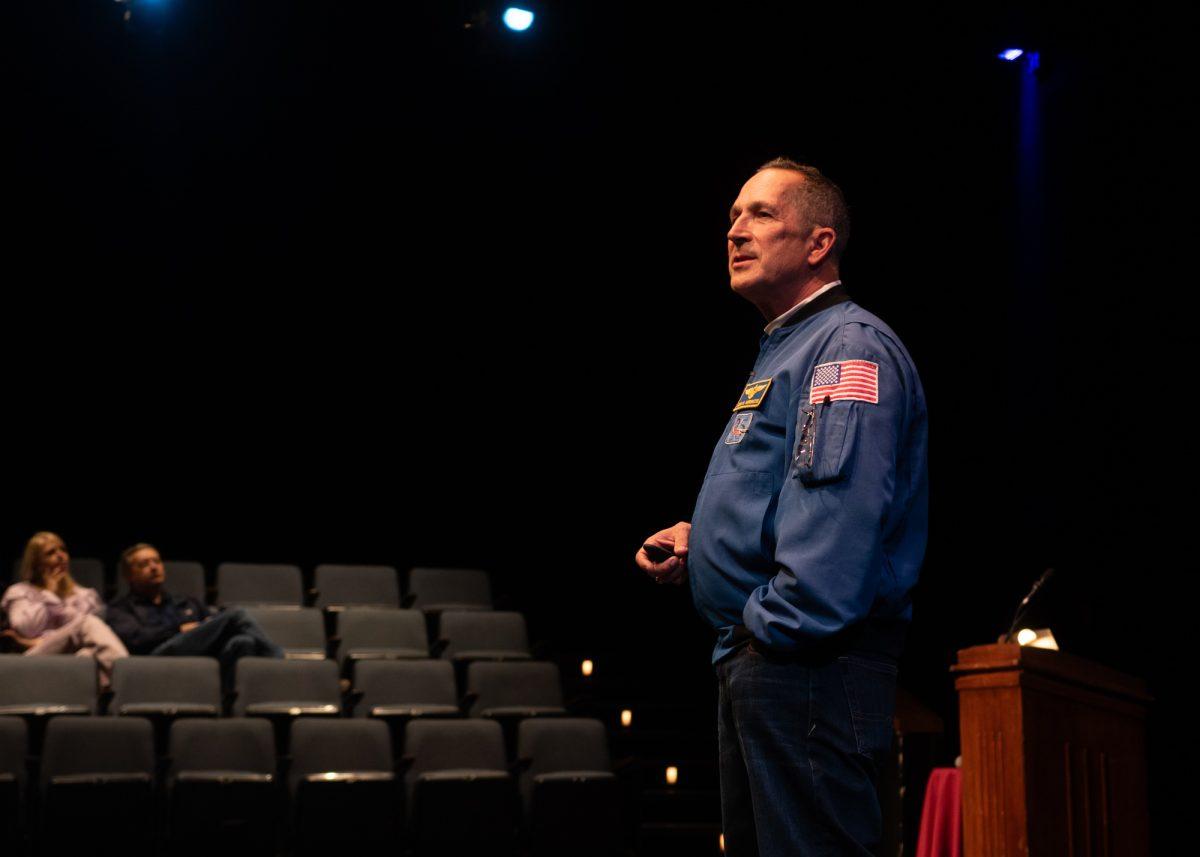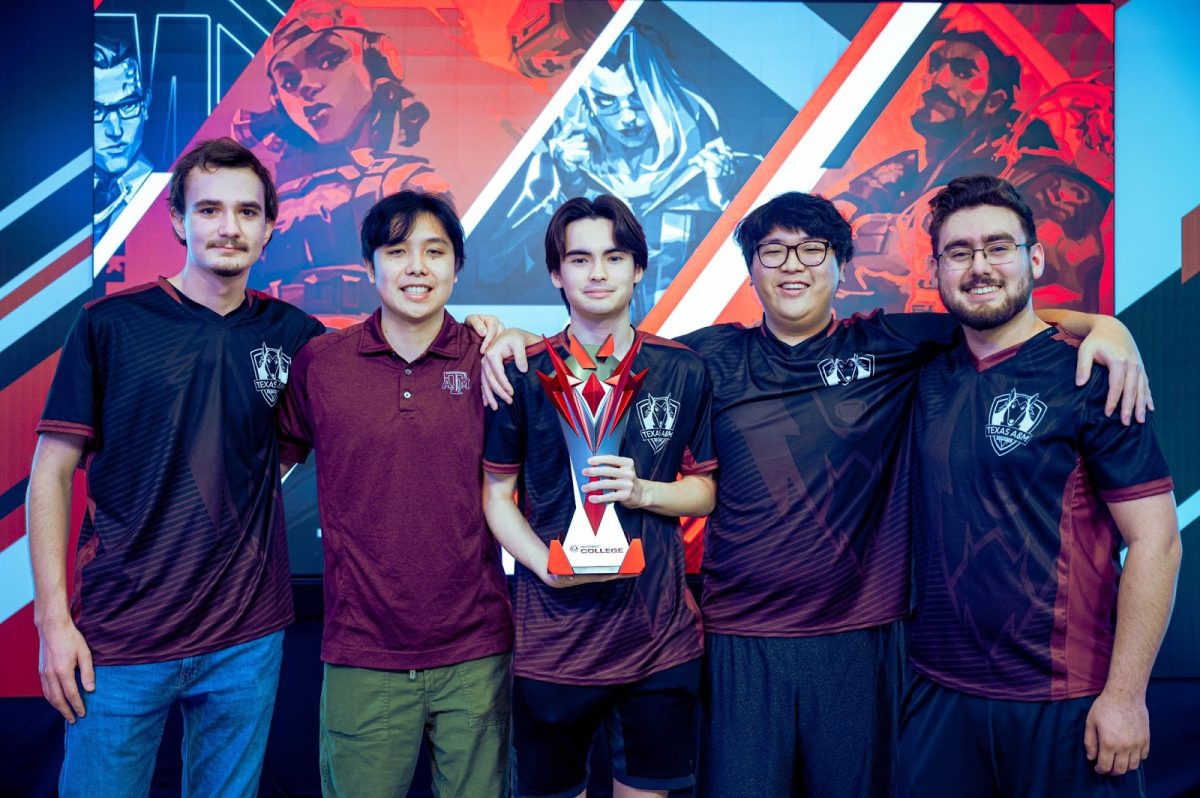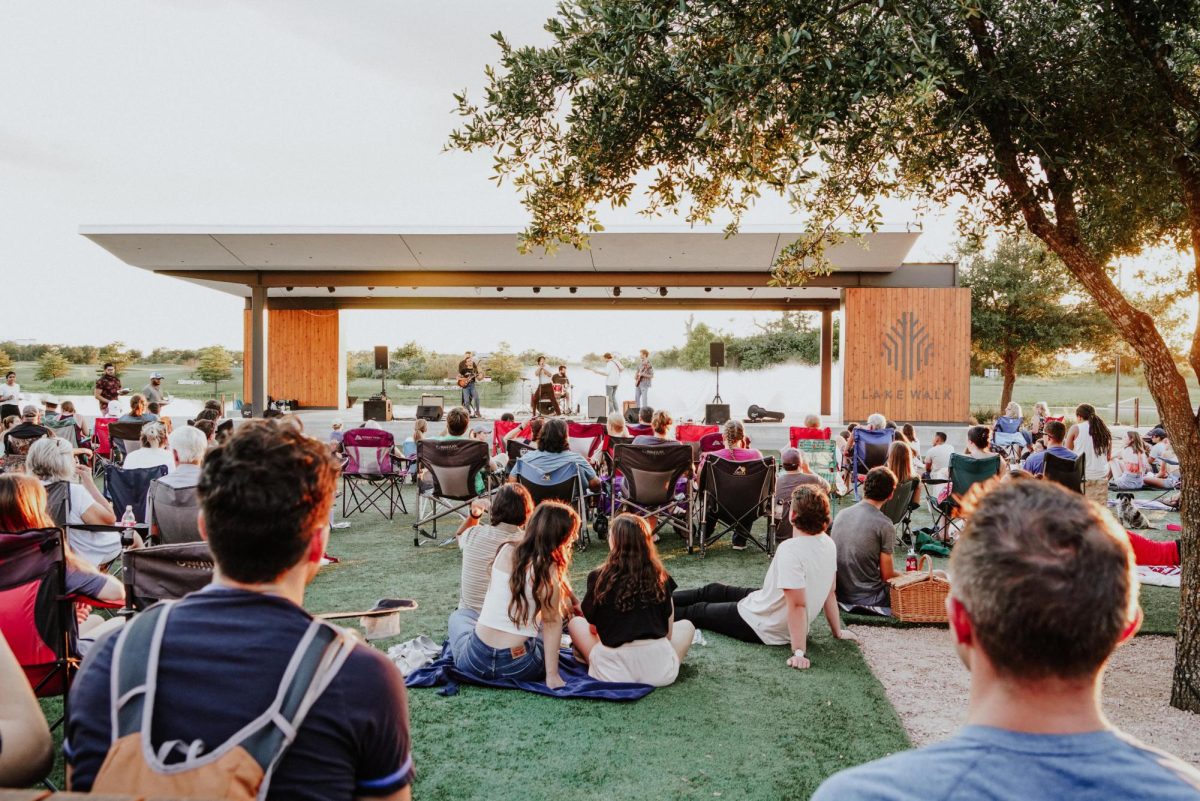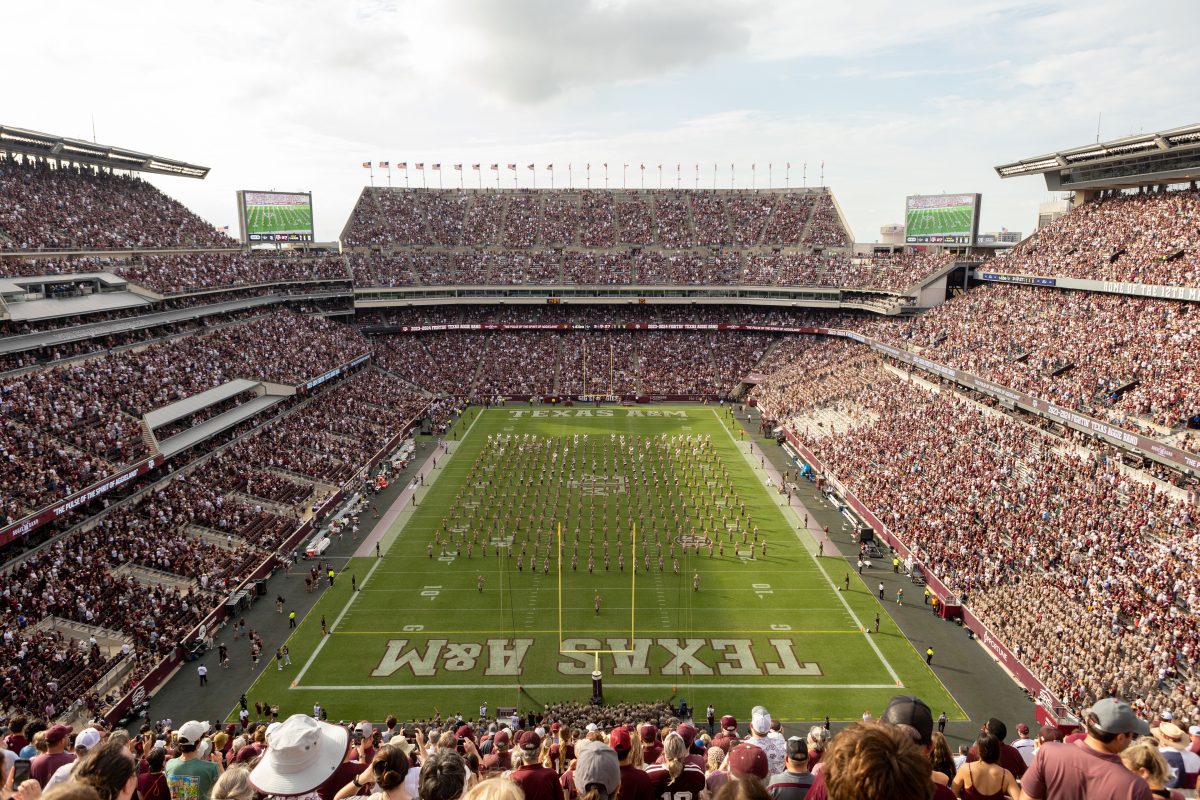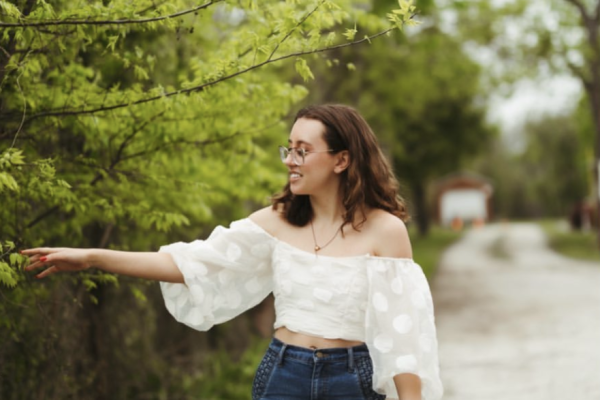An astronaut touched down in Aggieland this weekend. Commander John B. Herrington, who was the first Native American in space, met with students to discuss his experiences and career.
Herrington, whose accomplishments include two spacewalks, over 330 hours in space, documentaries, books and being featured on the 2019 Sacagewea dollar coin, narrated a musical performance Thursday night before sharing his own story Friday in Rudder Forum.
“I have kind of a strange journey to the Astronaut Corp,” Herrington said. “I’d like to share it with you because when I was eight years old I used to sit in a cardboard box and dream I was going to the moon. That’s what we were doing in the 1960s and ’70s. I never thought I could do it, but I admired the men that were doing it.”
John Herrington was born in the Chickasaw Nation and always loved science — several presentation slides showed him setting off toy rockets in fields or sitting in planes — but was kicked out of college for failing his classes. After restaurant work and even a brief stint as a professional rock climber, Herrington ended up going back to school, joining the Navy and eventually NASA. He credits others’ encouragement for his entire career; throughout Friday’s discussion, he kept driving home his awe at how far support from other people pushed him.
“The people I used to watch on TV as a kid I’m now colleagues with,” Herrington said. “All these people that were my heroes — now I’m finding myself doing things with them. It’s kind of strange, but it’s a wonderful thing because they’re just like us. Normal people that have done something extraordinary.”
He remembered one day during astronaut training when he realized how much responsibility he’d been given.
“Another astronaut came in; his name was Steve Smith,” Herrington said. “He wrote this really big number up on the board. He said, ‘In the history of the human race, 108 billion people have lived on the surface of the Earth.’ Then he wrote a much smaller number. ‘As of today, 644 of us have had the privilege of flying to space,’ Steve said. ‘Never forget how fortunate you are to do something so very few people have ever done or ever will do. It’s your responsibility to share that story.’”
His mission, STS-113, launched Nov. 23, 2002; along with photos of the launch and technical explanations of the space shuttle, Herrington shared the story of his first moment in space.
“I let go of my checklist and it hovered in front of me,” Herrington said. “It had never done that before. It’s like, ‘Oh, it’s real. Magic’s real!’ And then you realize — because you still have your seatbelt on — that you’re floating.”
The physics of spacewalks were covered, as well as the purpose of his mission. Herrington also had many zero-gravity anecdotes. The astronauts would play games like weightless pull-up competitions or races to eat floating M&Ms, which he showed in videos. However, the crew still dealt with the realities of an unnatural environment.
“The first time you try to sleep without touching anything is a really weird feeling. You close your eyes, but high energy particles hit you in the eyeball and kick off a photon and you see a flash of light,” Herrington said.
There was also little room for error onboard the International Space Station.
“What you don’t want to do is mess up your job. It’s not a fear of dying. It’s a fear of making a mistake,” Herrington said.
As the first Native American in space, Herrington honored tribes back on Earth by bringing flags and artifacts on his spaceflight. Two of these, an eagle feather and a flute, are now on display in the Smithsonian.
“The eagle feather was given to me by an elder with the Native American Science and Engineering Society; his grandfather was one of the survivors of the Battle of Little Bighorn,” Herrington said. “The flute was made by a Cherokee friend, an engineer at the Kennedy Space Center, and he used math to determine where all those holes go based on the length and the diameter.”
At the end of his presentation, Herrington opened up to audience questions. Students asked the astronaut more about his background and his experiences, as well as his view on current events and Russia.
“The neatest thing about the Space Station is the people I was trained to be my enemy were now my colleagues,” Herrington said. “I think it’s a great thing. We don’t get involved in politics. That’s not our job. We avoid that at all costs.”
When asked why he chose to go into scientific communication and education, he responded that he was paying back opportunities he’d had over the years.
“People ask me how my culture pulls into how I do things,” Herrington said. “I like to think of it as my ancestors made some really good decisions in their lives that allowed me to be alive, and I have to be grateful they had the wherewithal so my tribe could still be here and we could still flourish.”
Once retired, Herrington decided to show that gratitude by becoming the people who encouraged him.
“The people that I met along the way in my career that encouraged me to do something didn’t have to bother with me, but they did,” Herrington said. “My very first talk as an astronaut to a large audience was 3500 college students in Houston, Texas. Talk about flying in space — that’s not scary. Doing that is scary. And I told the story about where I came from. All of a sudden, I realized I’m talking to my aunts and uncles. I’m talking to my cousins. I’m talking to people that understand and appreciate the story. I felt like now I had an opportunity to make a difference in the lives of these students.”

















